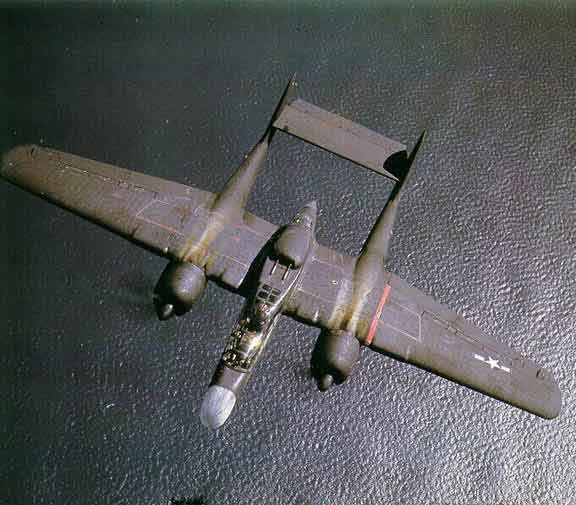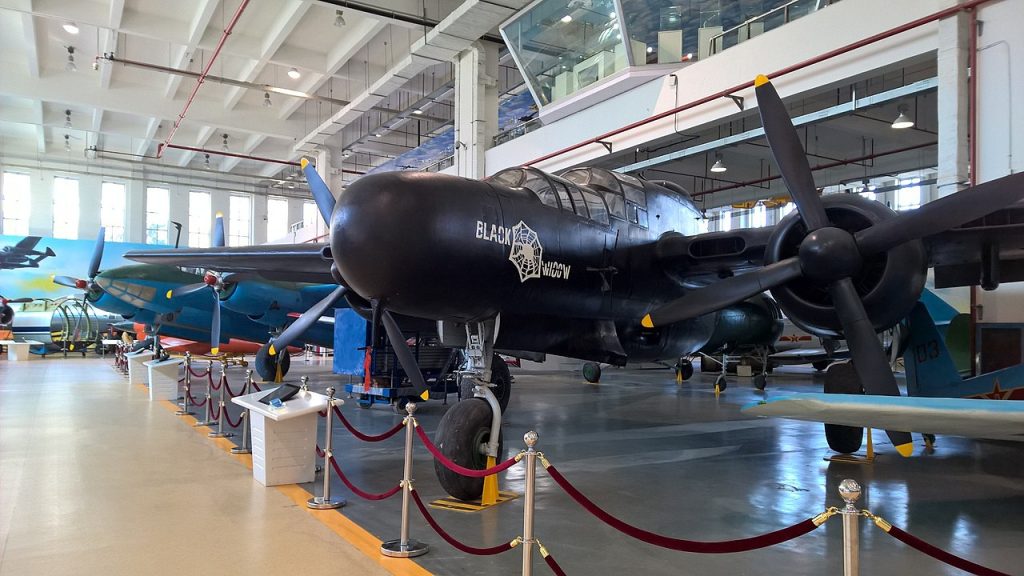
The P-61 Black Widow, a testament to American ingenuity and aeronautical prowess, emerged from the dark days of World War II as the United States’ first aircraft specifically designed to hunt the night skies. This formidable night-fighter, with its sleek, all-black fuselage and advanced radar technology, soared into military history books as a pioneering force in nocturnal aerial combat.

Conceived amidst the Battle of Britain and the subsequent shift of German bombing raids to the cloak of darkness, the U.S. Army Air Corps recognized the necessity for an aircraft that could patrol for hours and engage enemy bombers under the veil of night. Jack Northrop’s vision materialized with the P-61 Black Widow, an aircraft equipped not only with the means to find and destroy enemy aircraft but also the capability to remain aloft and vigilant for up to seven hours.

The Black Widow’s journey from contract to combat was marked by anticipation and innovation. Awarded a contract on January 30, 1941, Northrop’s design boasted twin tail booms and rudders, providing the stability needed to track and eliminate intruders. By May 26, 1942, Northrop’s test pilot Vance Breeze took the behemoth, which was nearly the size of a medium bomber, to the skies, proving its agility and combat readiness. Despite its size, the P-61 was restricted only from outside loops, sustained inverted flight, and deliberate spins.

Armed with a deadly combination of four 20mm cannons and four .50 cal. machine guns, the Black Widow’s arrival on the front lines was eagerly awaited. Production hurdles, including supply issues for the top turret, delayed its deployment, but by October 1943, the first P-61s were rolling off the line, quickly transitioning from defensive roles to aggressive night intruders after their arrival in Europe in March 1944.

As the war raged on, the Black Widow claimed its first aerial victory on June 30, 1944, when a P-61 named “Moon Happy” downed a Mitsubishi G4M Betty bomber over Saipan. It wasn’t long before the Black Widow’s presence dominated the night skies, amassing 127 confirmed aerial victories across the European, Mediterranean, Pacific, and China-Burma-India theaters.

One particular P-61, dubbed “Lady in the Dark,” became legendary for forcing a Japanese Ki-43 OSCAR into fatal crashes, without firing a single shot. The first incident occurred on the night of August 14-15, in the uncertain hours following Japan’s surrender.

As peace returned, the P-61’s role evolved. The cancellation of further production led to the Black Widow’s adaptation for reconnaissance and scientific tasks. A variant, the F-15A, excelled in photographic surveys, while select P-61Cs contributed to meteorological research as part of the Thunderstorm Project.

Ultimately, the end of WWII ushered in the twilight of the P-61’s military service, with many transitioning to the Air Force surplus by 1950. Yet, even in retirement, the Black Widow’s legacy endured through the National Advisory Committee for Aeronautics (NACA), which utilized the aircraft for high-altitude aerodynamic research until 1954.
related images you might be interested.








